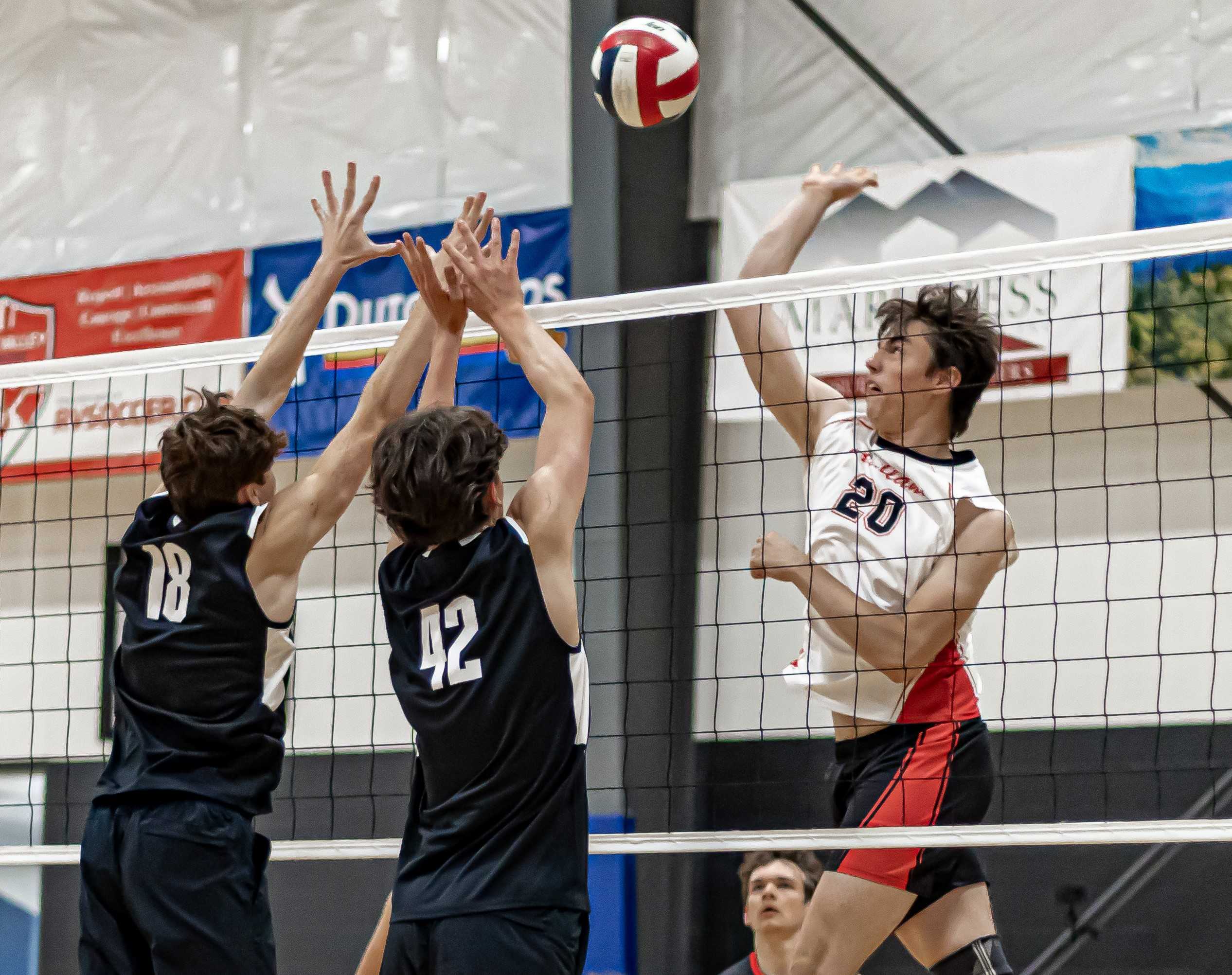
Boys volleyball has come a long way in Oregon high schools since it started with a makeshift, five-team league in the spring of 2022.
Not only was there no previous infrastructure, but the players lacked basic fundamentals.
“We had a bunch of boys that wanted to play, but they were starting pretty much from scratch,” said Patrick Gibson, a former volunteer assistant for Lincoln's girls team who organized the Oregon High School Boys Volleyball Association. “There weren't a lot of club players that were playing boys volleyball at the time.”
Three years later, the sport is thriving in the state.
Boys volleyball grew to 25 teams and 353 players in the spring of 2023, leading the OSAA to recognize it as an emerging activity that fall. Last spring, there were 52 teams and 845 players. This year, it's up to 68 teams and 974 players.
Gibson believes the sport is filling a niche at Oregon high schools. A survey of players last year revealed that for 43 percent of them, boys volleyball was their only high school sport. And 45 percent of the players were non-white.
“It's definitely taking off,” Gibson said. “I've got kids sending me notes that are saying, 'Thank you so much for doing this. This has been my dream. I've finally found my people, my sport.'
“This is a way they can engage with their schools. There's nothing like competing for your high school. Being out there in front of your friends, it gives you a sense of belonging that a lot of kids are looking for.”
After completing its second season as an emerging activity, boys volleyball will be eligible to become an officially sanctioned OSAA sport. In October, the OSAA delegate assembly will vote on it.
As of last spring, 28 state associations had sanctioned boys volleyball. In terms of participation, Oregon compares well with those states, ranking No. 15 in number of schools and No. 21 in total athletes.
It's one of the fastest-growing sports in the nation.
“The momentum is astounding,” Silverton coach Benson Short said. “From my perspective, the level of play is increasing really quickly. We're seeing more teams and athletes engaging in club volleyball, as well. Those numbers have skyrocketed in Salem.”
It's wildly popular at some schools. Nelson had more than 65 boys turn out this season, and Silverton and Wells are pushing 30. West Salem graduated most of its team from last season, but 12 seniors turned out for the first time this year.
Of the 28 players at Silverton, nine also are competing in track in the spring. Short said that most of his players come from soccer and basketball, and some play football.
“It's such a great workout when you talk about explosion and fast-twitch muscles,” Short said. “The crossover is great with basketball, fantastic with track and football, where you need to move quickly from a standing position. The timing, the coordination, it engages all of those pieces.”
Boys volleyball is way past the threshold of 50 schools for the OSAA to consider sanctioning it. Participation is strong, but many other factors will come into play in the vote.
In a recent school survey regarding emerging activities (discussed at the last delegate assembly meeting April 7), representatives expressed concerns about finances and staff workload. Some had questions about the effect it could have on participation in other sports.
For the OSAA, adding sports such as boys volleyball and girls flag football – in its first season as an emerging activity this spring – could create a need to expand its staff.
OSAA executive director Peter Weber said the delegate assembly “will have multiple options at their disposal” when sanctioning comes up for a vote in October.
“They could vote to sanction it or look at extending emerging status for a year or two,'” Weber said. “Based on the feedback from the delegate assembly caucus groups, each classification reported out wanting to take a closer look at emerging activities as a whole."
Gibson is optimistic about the sport's chances, but acknowledges that the delegate assembly must “evaluate a lot of factors.”
“They must consider if it appeals to students at all classifications and across the whole geography of the state,” Gibson said. “A lot of schools are concerned about budgets. But my perspective is, what a wonderful time to add a very low-cost activity.”
Last year, Gibson posted the scores and standings on a league website. This season, the scores, standings and rankings are available on the OSAA website, osaa.org.
The teams are divided into 11 special districts, loosely based on school enrollment and geography. All of the schools represented are in western Oregon, except for Summit, Crook County and Central Christian. Twenty-six teams are in 6A.
Last year, boys volleyball had state championship brackets for 6A, 5A/4A and 3A/2A/1A, with Clackamas, Summit and St. Mary's of Medford claiming those titles, respectively. This season, there are enough teams to have championship brackets for 6A, 5A, 4A and 3A/2A/1A.
Gibson credits the OSAA with helping expand the sport. Before the OSAA got involved, he said he “did a lot of spamming” of athletic directors to try to get the word out.
“I'm sure there were ADs that were sick of me, but I didn't care,” Gibson said. “The OSAA starting to message for us, for the kids, saying this is an emerging activity, it definitely legitimized it.”
Boys volleyball is to the point now that “it has a life of its own,” according to Gibson.
“I see teams sign up this year and I'm like, 'I've never talked to the AD, I've never talked to a coach,'” he said. “They just sign up. And I'm like, 'OK, here we go.' It's got enough growth and momentum that moving forward, it will stand.”









